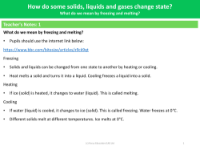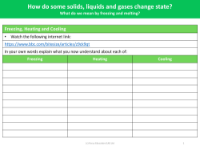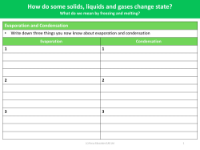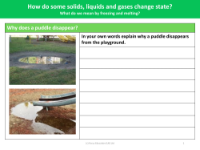What do we mean by freezing and melting? - Presentation
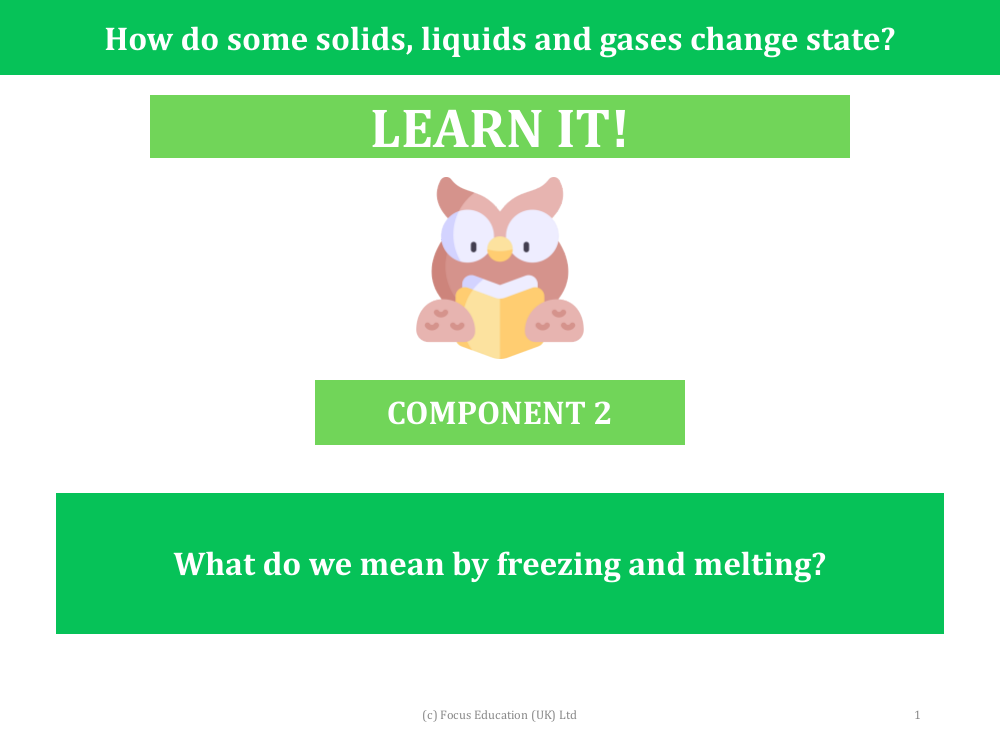
Science Resource Description
Freezing and melting are key processes in the change of state between solids and liquids. When a solid is heated, it absorbs energy, causing its particles to move more freely and transition into a liquid state; this process is known as melting. For example, when ice is heated, it melts into water. Conversely, freezing occurs when a liquid is cooled, losing energy, and its particles slow down and become more fixed, forming a solid. Water, for instance, freezes into ice at 0°C. It's important to note that different substances will melt and freeze at various temperatures, with ice being a common reference point at 0°C for its melting and freezing transitions.
The educational material also delves into related concepts such as evaporation and condensation, which are changes of state between liquids and gases. Evaporation happens when a liquid turns into a gas, often under the influence of heat, while condensation is the process of a gas cooling and changing back into a liquid. Students are encouraged to explore these phenomena through various resources and activities, including observing puddles evaporating on a playground. Additionally, the lesson touches on the concept of humidity and how it differs from evaporation. To deepen their understanding, students are tasked with researching and recording the melting points of different metals, such as steel, copper, and mercury, and explaining in their own words why puddles disappear from the playground, linking it to the concepts of evaporation and condensation they have learned.
